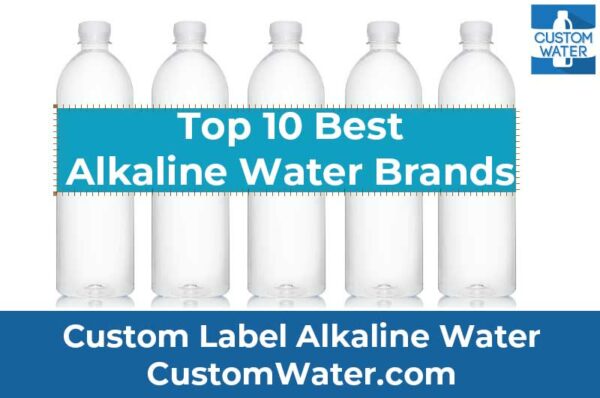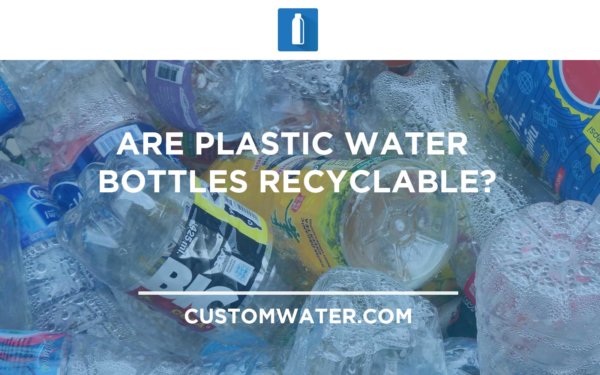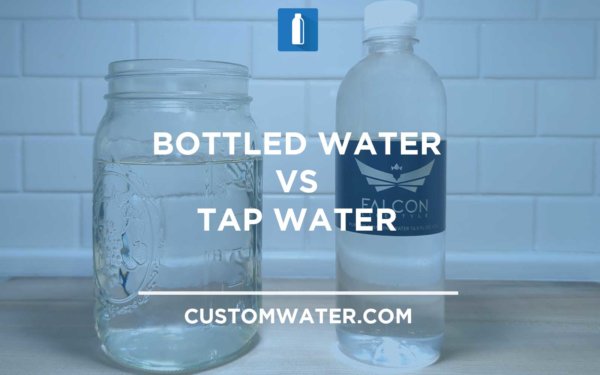Spring or mineral water – what should your custom label say?
Many people assume that mineral water is the same as spring water. Without carefully reading labels, it is hard not to make the assumption. After all, what sets spring water apart from purified and distilled water is its mineral content.
However, the terms “mineral water” and “spring water” are not just marketing jargon. They are, in fact, different types of water, both safe for drinking and regulated by strict FDA standards.
From a business standpoint, aside from adhering to safety guidelines, knowing the
differences between mineral water and spring water will help you label your bottled water correctly to attract the right people.
What is Spring Water?
The greatest appeal of spring water is its mineral content. To put it simply, spring water “springs” from an underground aquifer. According to the EPA, spring water is “any water that originates from an underground aquifer and is collected as it flows naturally to the earth’s surface or via a borehole that taps into the underground source.”
As the water rises to the surface and flows down the sides of mountains, hills, and valleys, it passes over rocks and other natural filters, removing harmful water contaminants and picking up minerals such as calcium, potassium, sodium, and magnesium.
The mineral content found where spring water is sourced affects the taste of the water. This means some bottled spring water may taste slightly bitter or salty. Still, many people agree that spring water has a fresh, crisp, great taste.
Additionally, proponents of spring water believe that its mineral content can do amazing things for the body, such as reduce the signs of skin aging and promote skin elasticity, boost the immune system, help blood circulation and prevent blood clotting, support the digestive system, and many more.
Although these claims are not fully backed by scientific evidence, there are relevant studies that support what minerals such as magnesium, potassium, sodium, and calcium can do, and these are the same minerals found in most spring water.

Impurities are dissolved or removed during distillation to purify the separated steam or vapor. These impurities include toxic metals, biological contaminants—such as bacteria, algae, viruses, parasites, and fungi—and minerals like lead and copper. That’s why distilled water is also commonly referred to as purified water. It is the purest form of water you can find.
Because distilled water does not contain harmful minerals, it is often used to maintain cars and household appliances. It is also used to clean hospital equipment and help prevent contamination and infections. Additionally, laboratories prefer distilled water since it does not contain chemicals that react in experiments.
Unfortunately, here’s the catch: distilled water does not contain the minerals your body needs. Distillation removes oxygen, simple hydrogen, and 99.9 percent of other minerals found in water, along with water contaminants and heavy metals. So while you are assured that distilled water is clean, pure, and safe, it does not do much for your body aside from quenching thirst.
What Is Mineral Water?
What exactly is mineral water, and how does it differ from mineral-rich spring water?
Frankly speaking, there is not a lot of difference between the two, but mineral water can either be sparkling or still. Sparkling water is carbonated or infused with carbon dioxide under pressure. This explains the water’s sparkly appearance. Still mineral water is the opposite. It is not carbonated and does not have floating bubbles.
Now, both spring and mineral water come from underground sources, and both contain minerals that can support different bodily functions, such as digestion and blood circulation, and promote hydration, bone and muscle health, and good immunity. Unlike spring water, however, mineral water is bottled directly at the source.
According to the FDA, for water to be considered “mineral water,” it must “have no less than 250 parts per million (ppm) total dissolved solids; it must come from a geologically and physically protected underground water source; and it must contain no added minerals.” [Source: FDA]
Furthermore, mineral water also “must have a constant level and relative proportions of minerals and trace elements at the point of emergence from the source, with due account being taken of natural fluctuation cycles.”
For many people, this means that mineral water is just as safe as other types of drinking water. For the health-conscious, the mineral-rich spring and mineral water are both win-win.
Either way, CustomWater can help you bottle, label, and pack your own unique brand of bottled water. Whether you want bottled spring or mineral (or both!) water, we guarantee the best custom result. Get a quote now!








